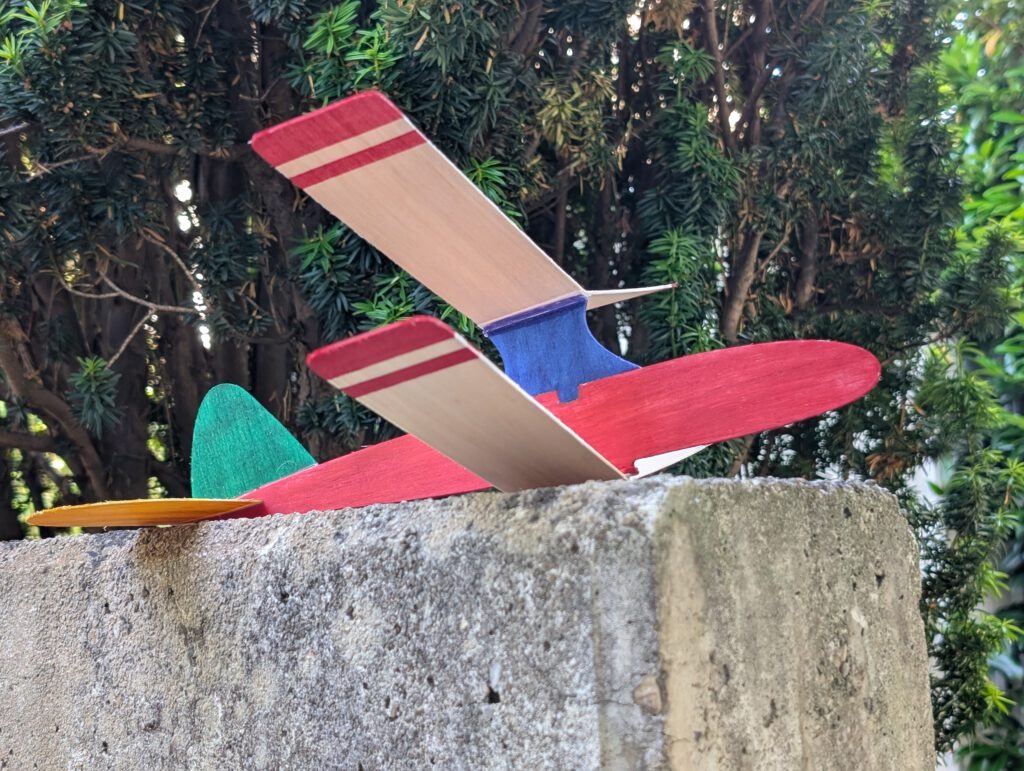
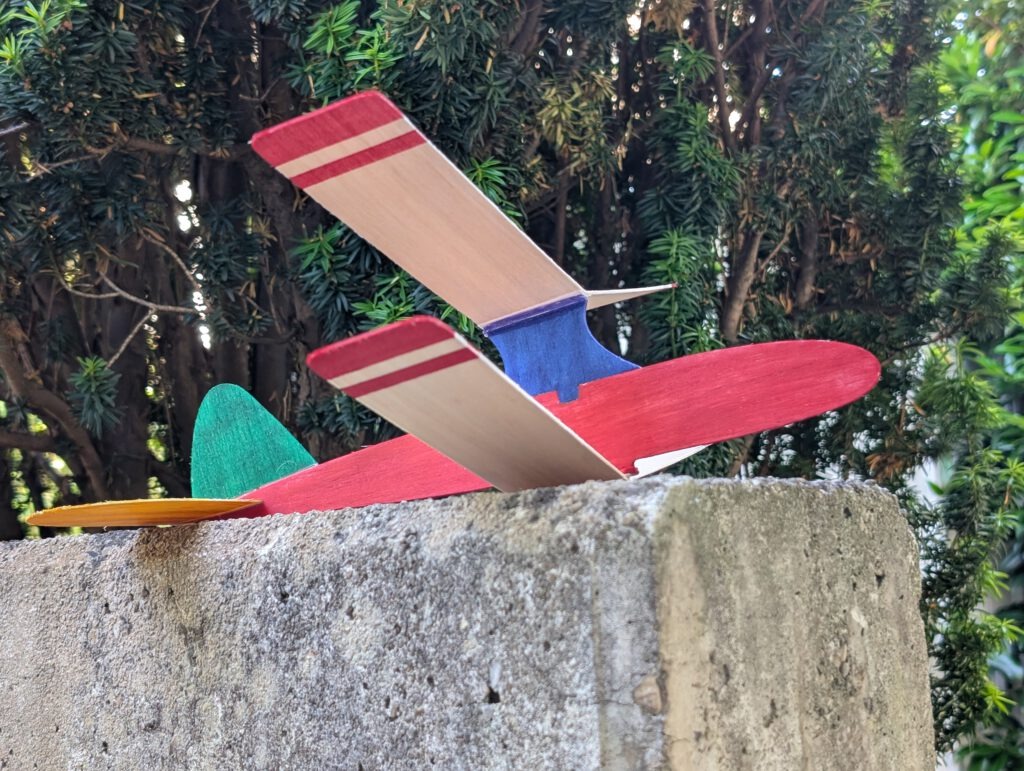
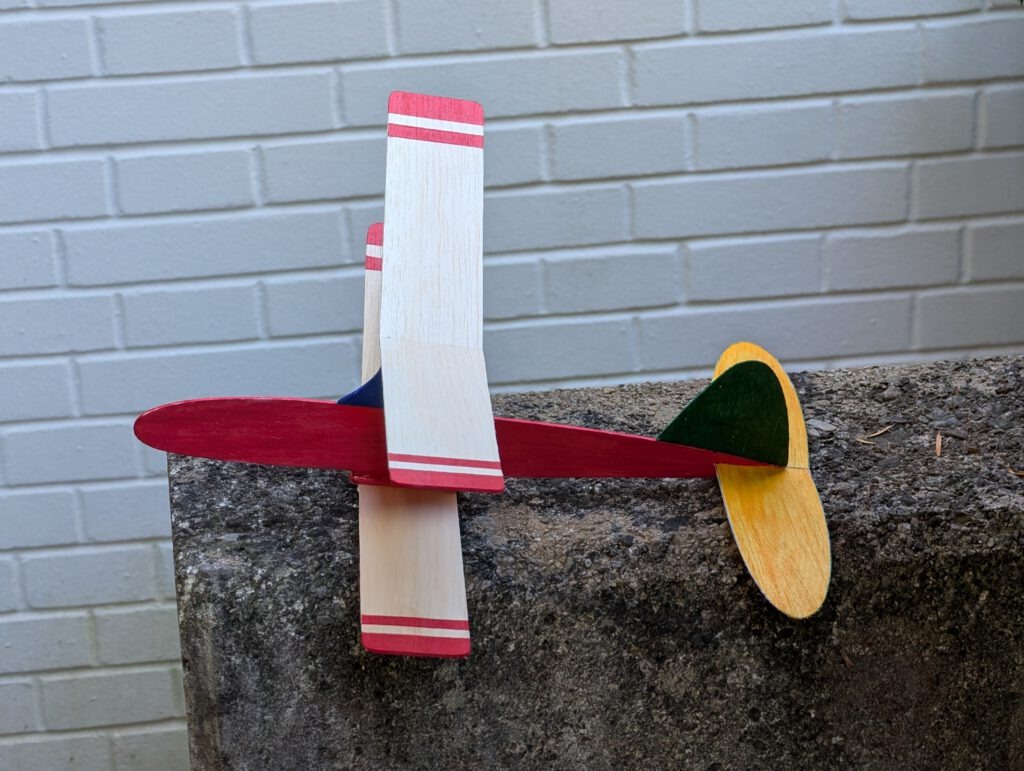
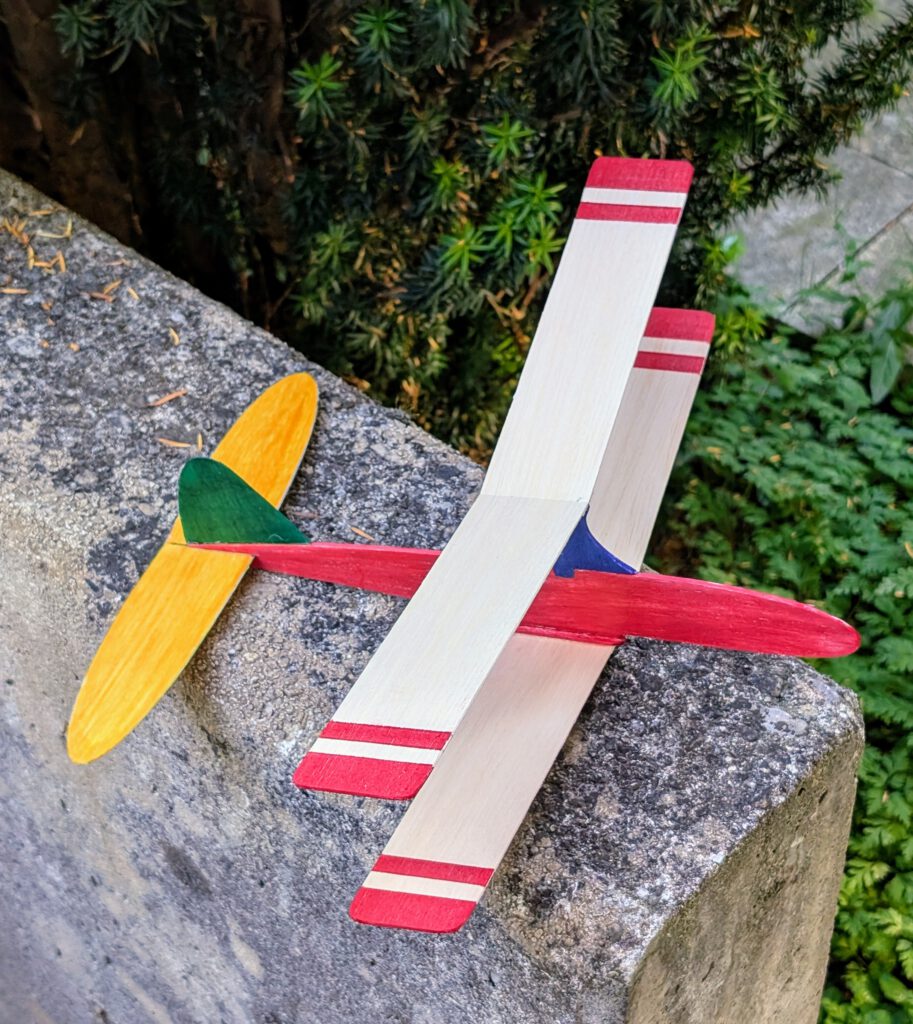

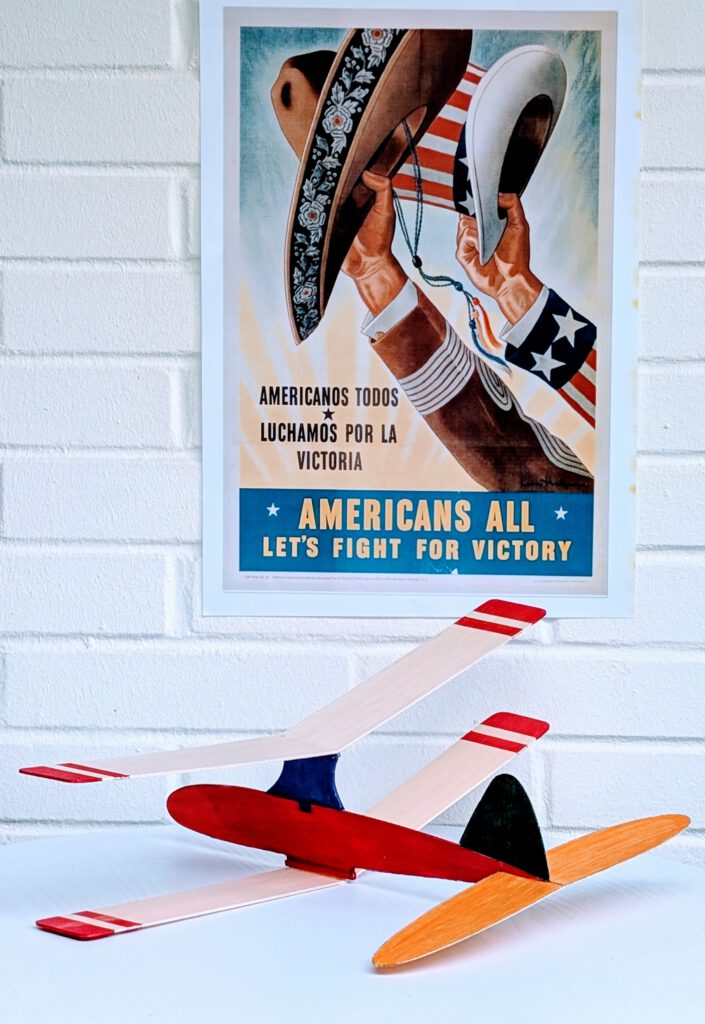
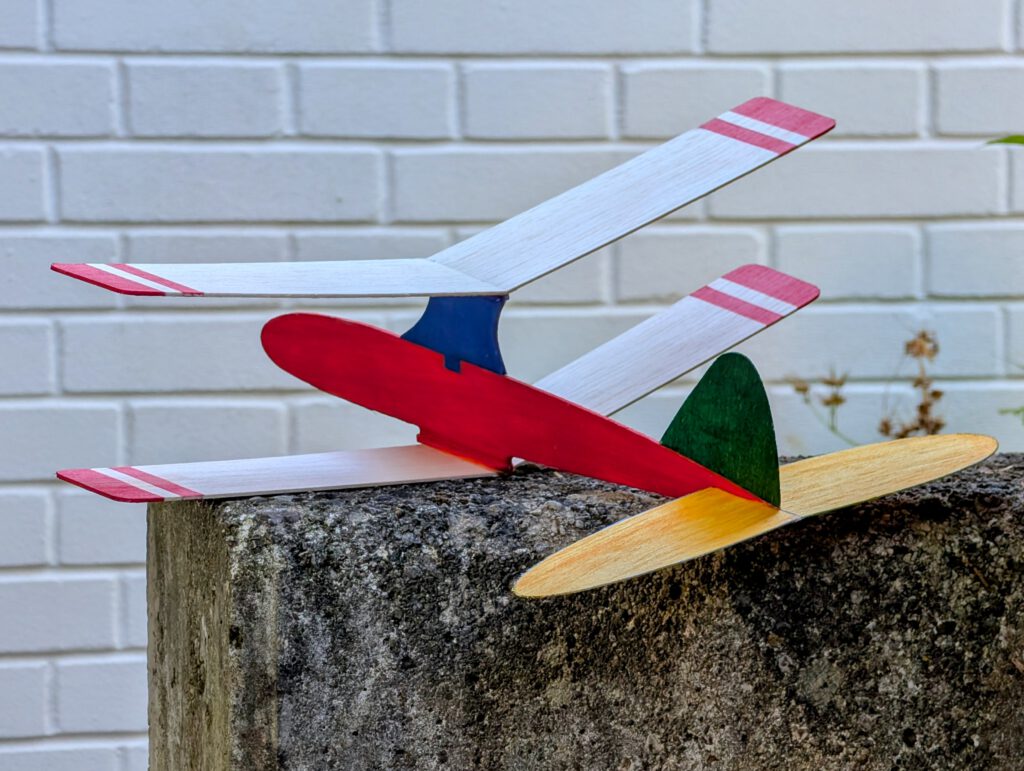
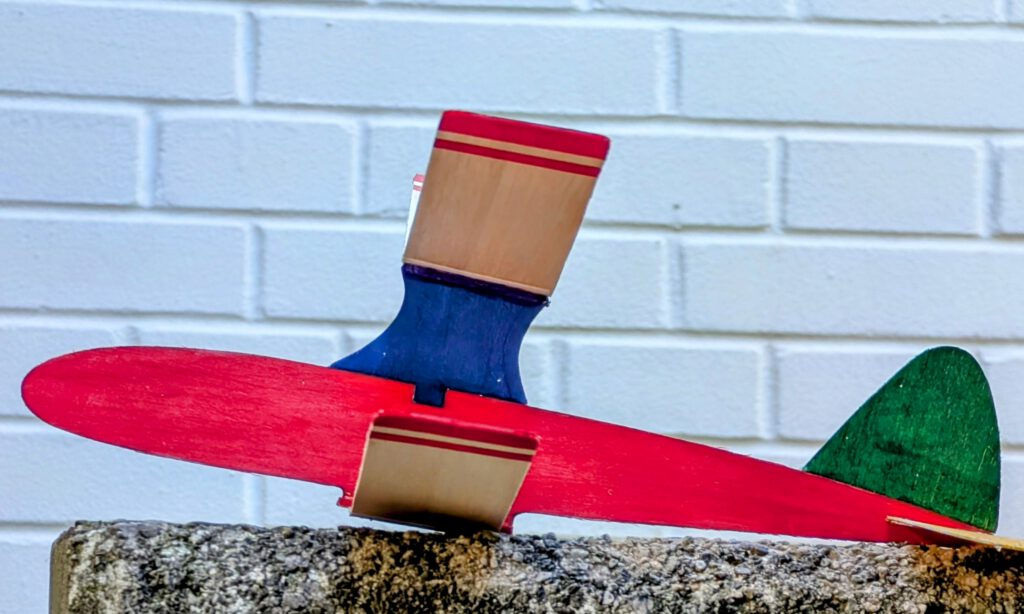
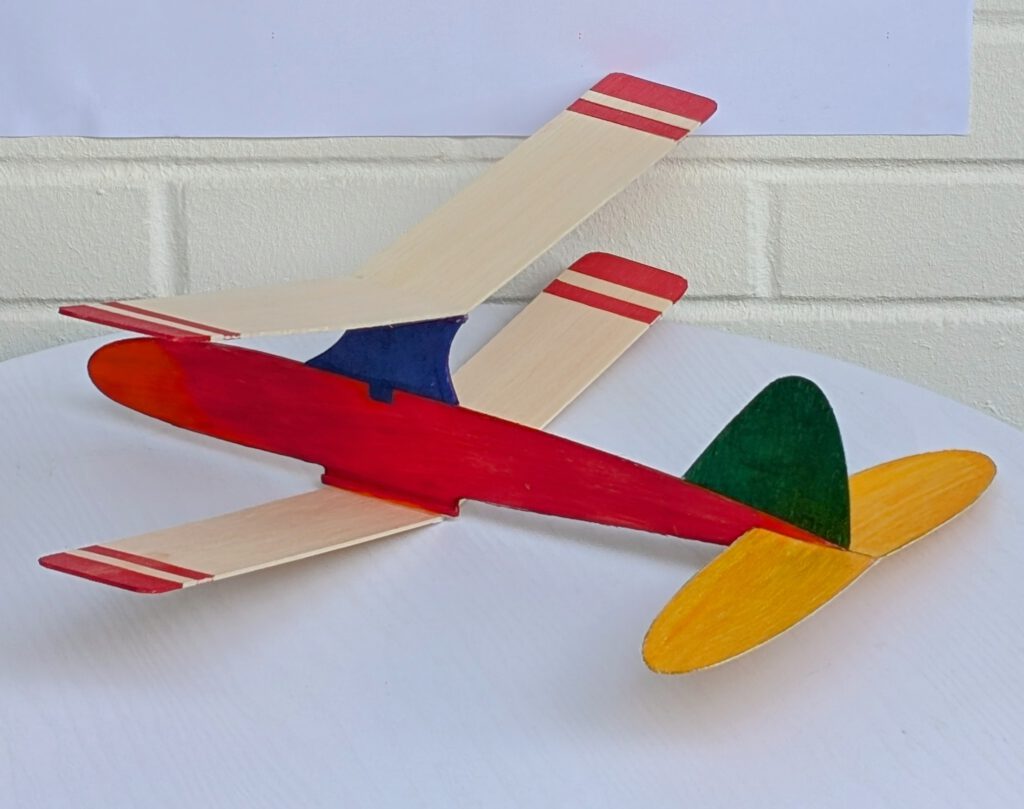
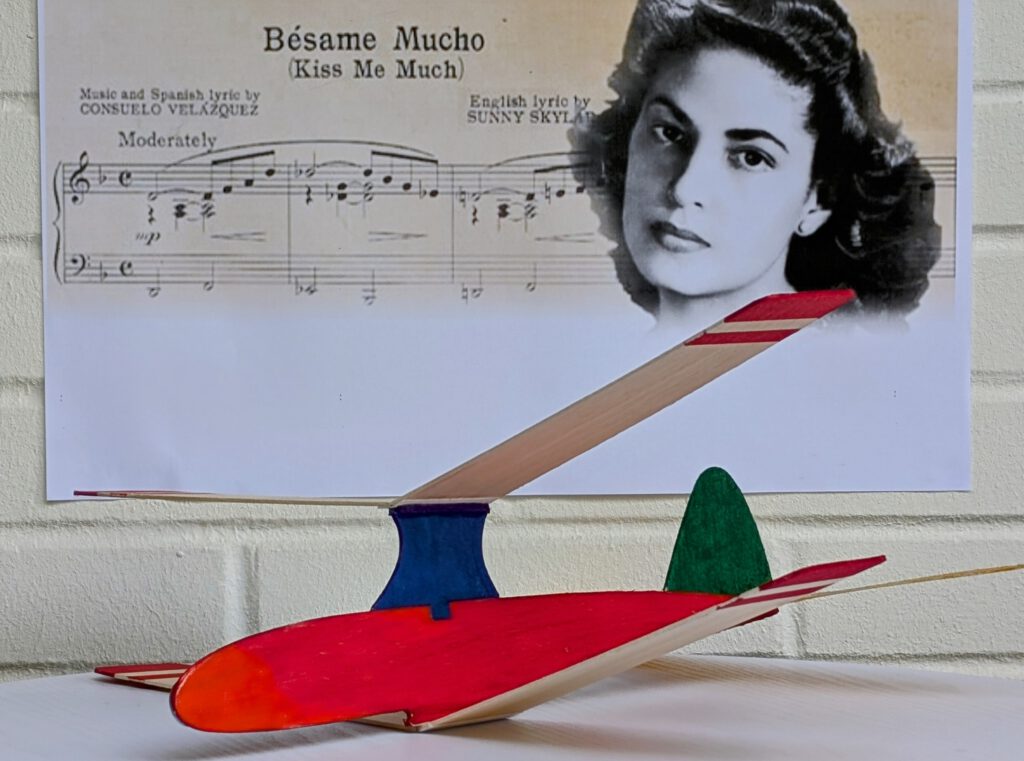
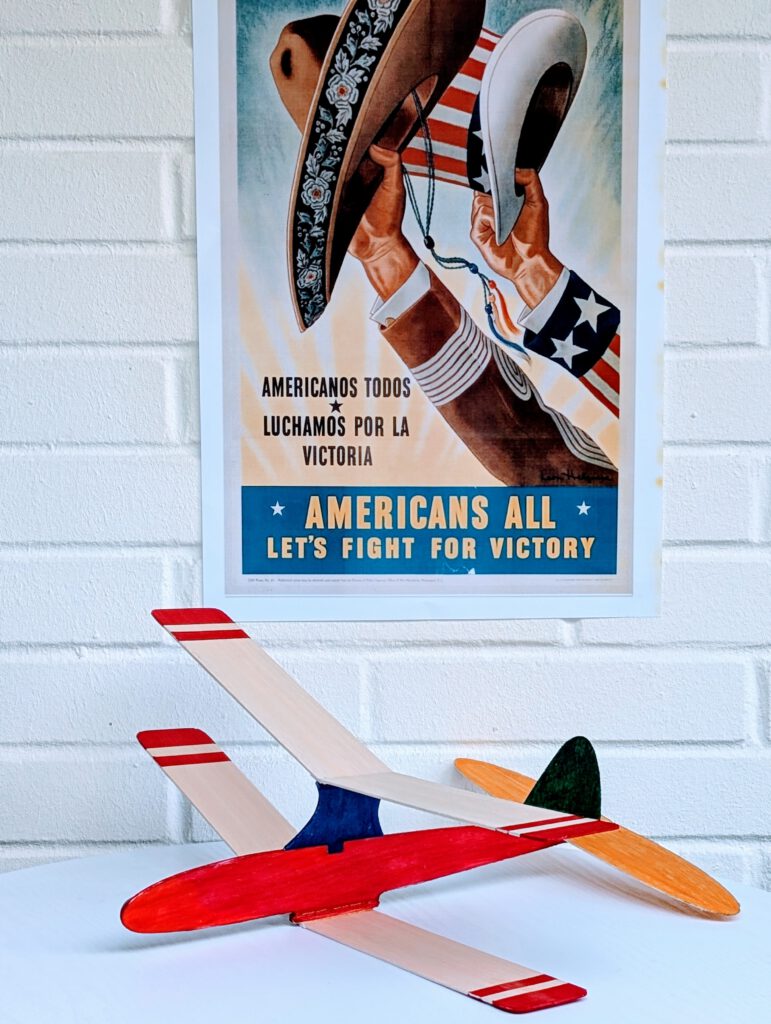
Span 41 cm / 16 in
Weight 26 g / 0.9 oz
The concept:
■ Biplane
■ Stable flyer
■ Easy to build
■ Nostalgic outlines
■ Colorful appearance
■ Flat sheet wing profile
Result was a rather fast glider with nice flight characteristics which has no problemswith light gusts.
Name:
Is Spanish naturally and means Kiss me a lot. Refers to a long time very popular song by famous Mexican female concert pianist and composer Consuelo Velazquez Torres (1916-2005). The great Nat King Cole recorded the first of so many English language adaptations of Bésame mucho.
Building the sheet balsa glider Bésame mucho.
Materials
Fuselage: B 2.5; pylon: B 2.5; wings: soft B 1.5; wing supports: B strips 3 x 3; horizontal stabilizer: B 1; vertical stabilizer: B 1; linen band width 1/2 in / 12 mm; ballast: steel or lead.
Assembly
Cut out balsa parts in accordance to plan. Cut slot for horizontal stabilizer into fuselage. Sand well. Color may be applied at this stage.
Wing:
Wing consists of two identical pairs of wing halves. Fix one wing half on building board with needles and cement corresponding half to it thereby observing dihedral given on plan. Cover joining area with linen band on lower and upper side applying ample amounts of glue. Repeat procedure for other wing (photo). Let dry.
Fuselage:
Fix fuselage with needles on building board. Cement pylon in its place (photo). Whendry sand smooth on both sides.
Cement vertical stabilizer in place (photo). Prior to this underlay stab with thin cardboard as fuselage and vertical stab are not of the same thickness. Result should be absolutely symmetrical. Use needles to hold in place. Let dry.
Cement wing support strips (B 3×3) using needles to hold in place (photo). Let dry.
Put fuselage on so called third hand and cement horizontal stab into its slot using needles to hold in place (photo). Visual check at least twice that symmetry is obtained. Let dry.
Final Assembly:
Put fuselage on third hand and install upper wing (photo). Doublecheck visually symmetry. Put aside and let dry.
Turn assembly around and fix it – now upside down – on third hand (photo). Cement lower wing in its place again meticulously doublechecking symmetry. Let dry.
Use small piece of lead or scrap metal to balance model at given position.
Remember correct center of gravity (CG) is essential for successful flights.
Make test flights over tall grass.
¡Muchos vuelos exitosos! (Size bol başarılı uçuşlar diliyorum!)

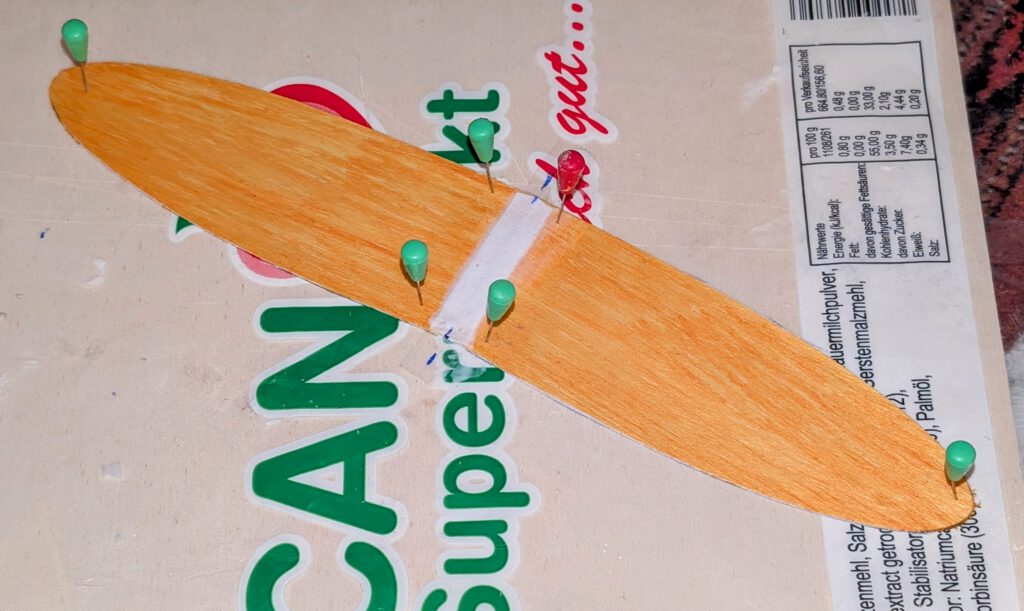
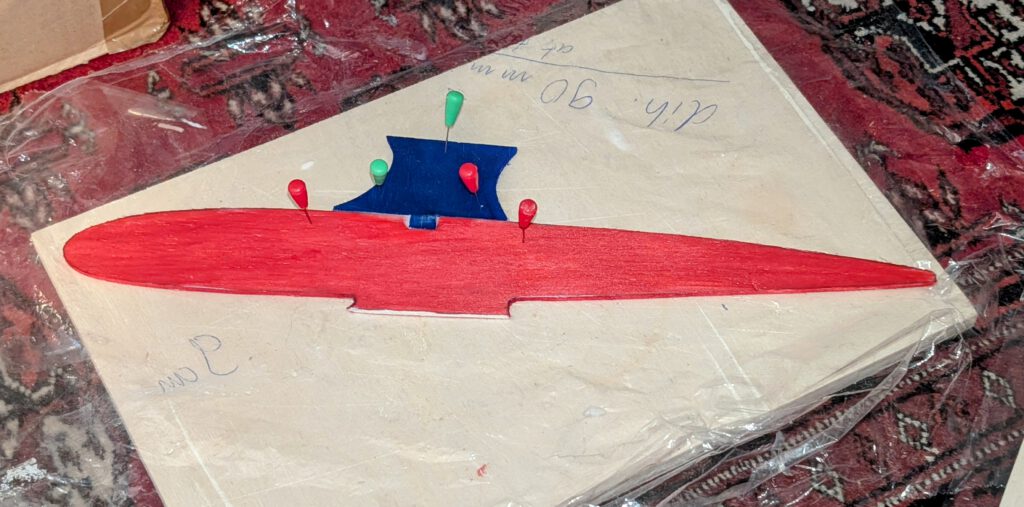
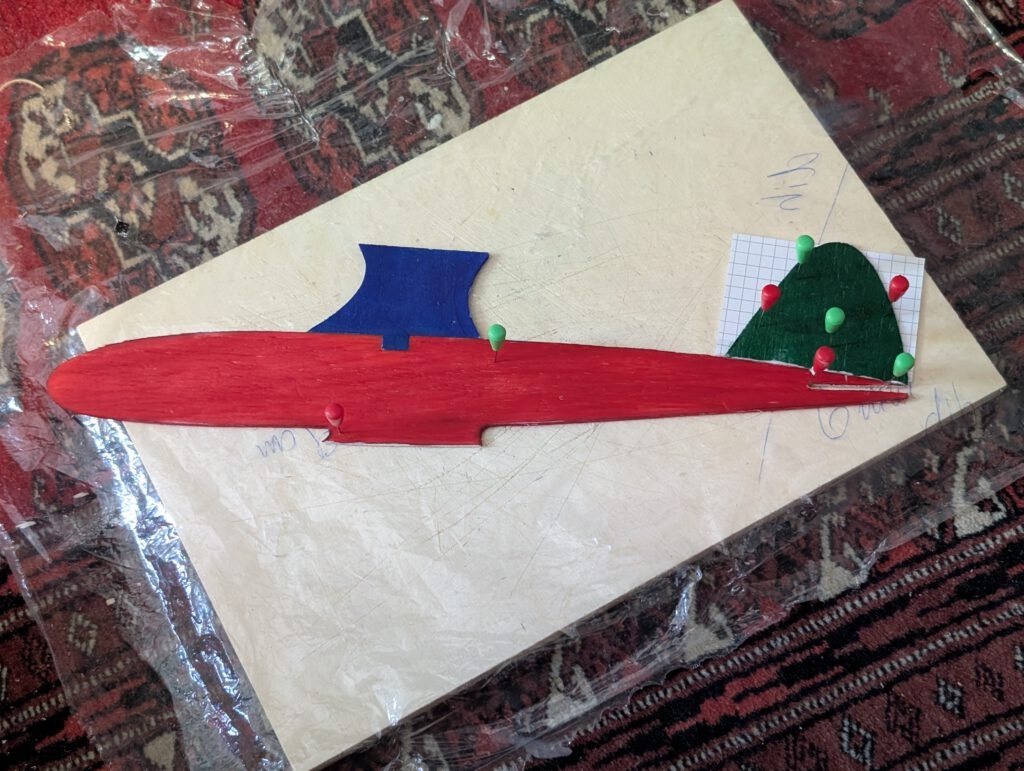
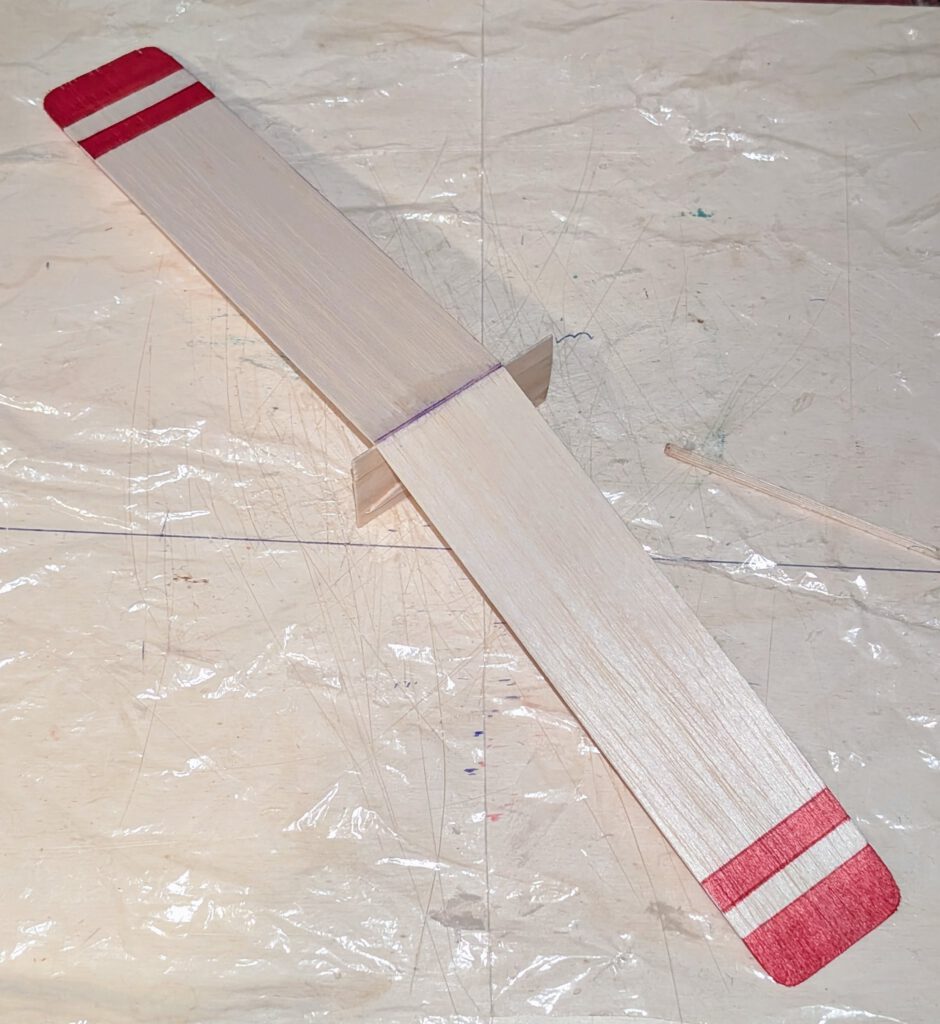
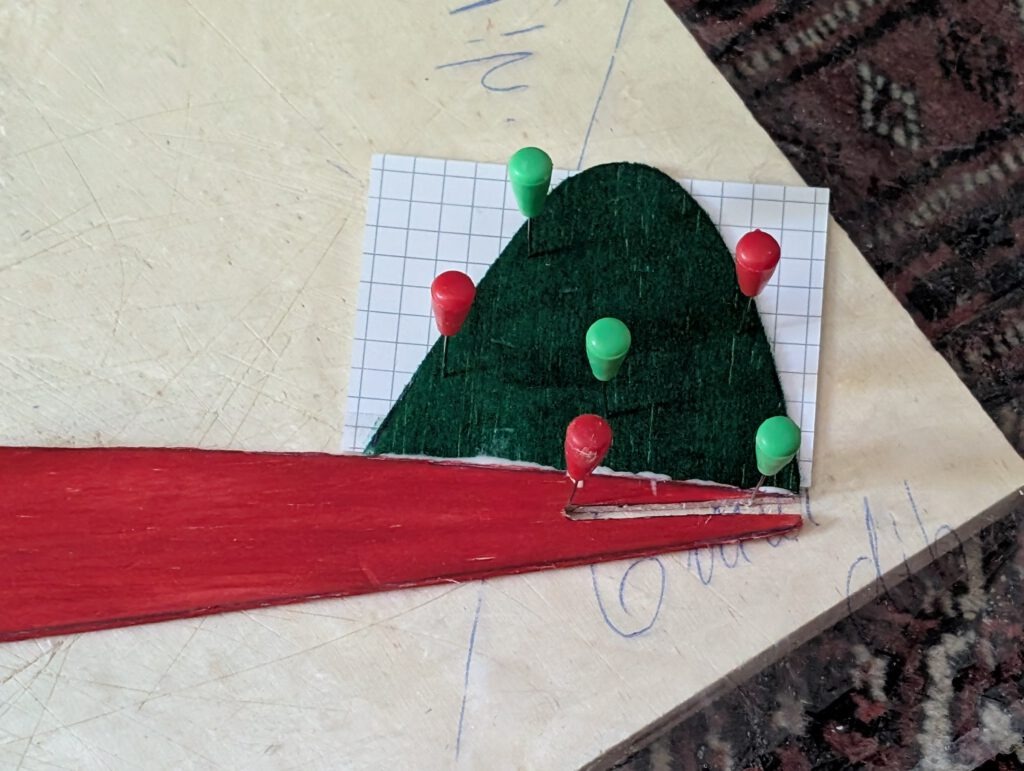
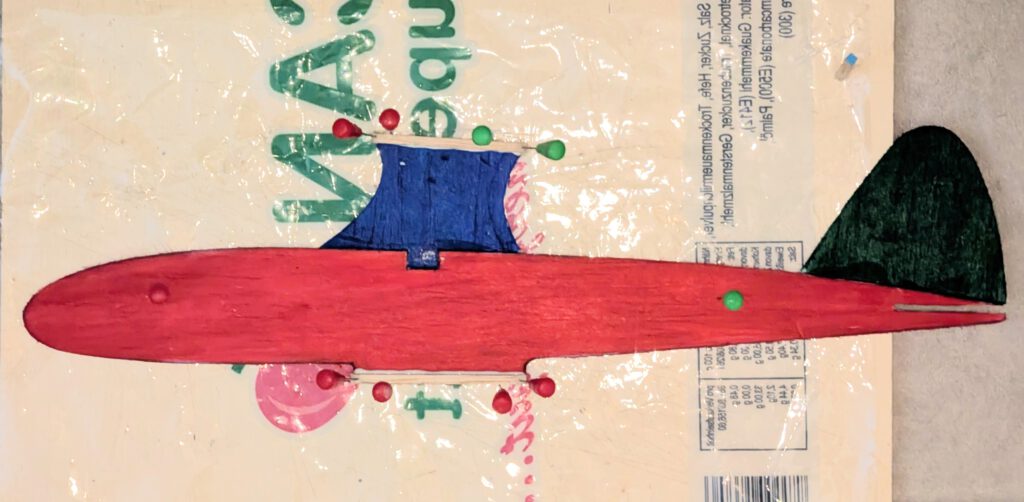
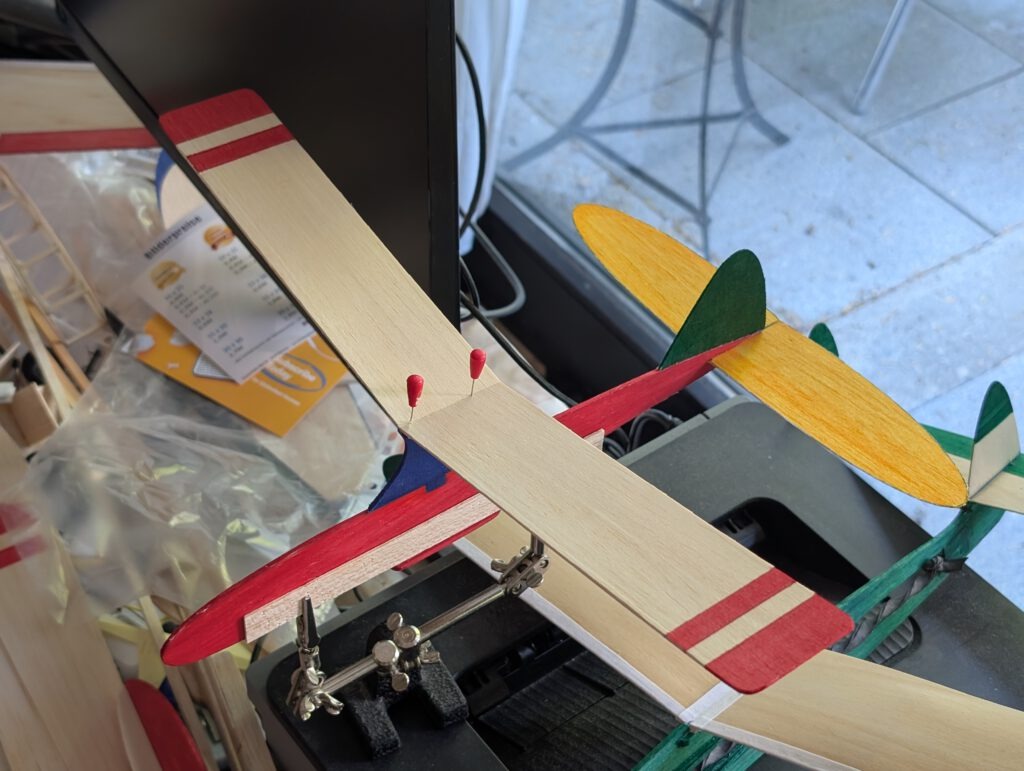
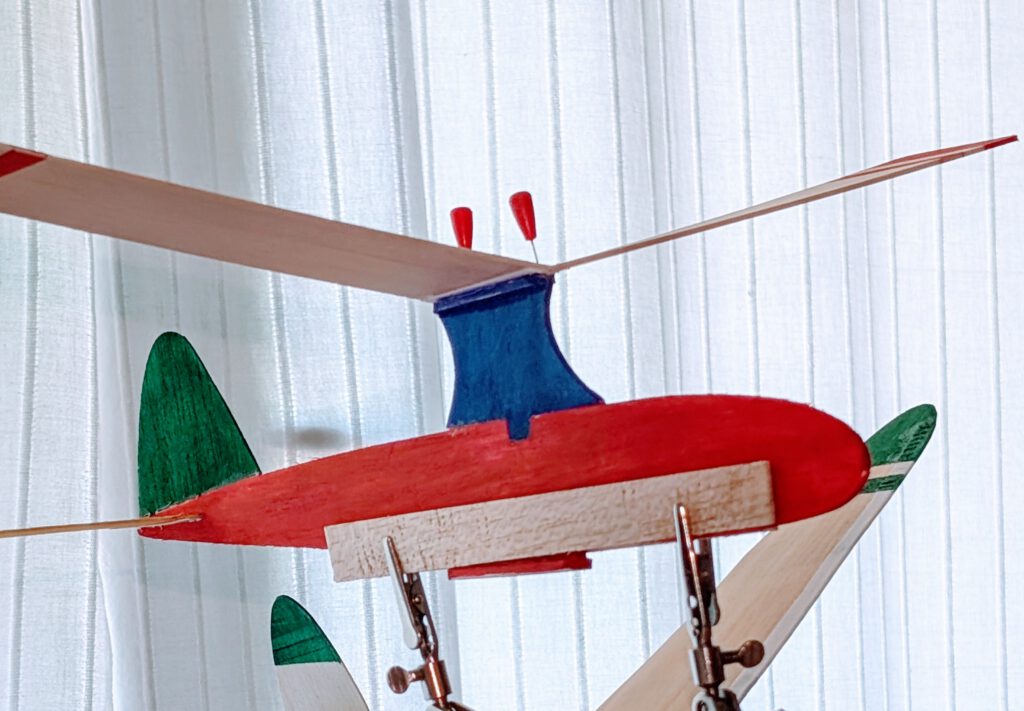
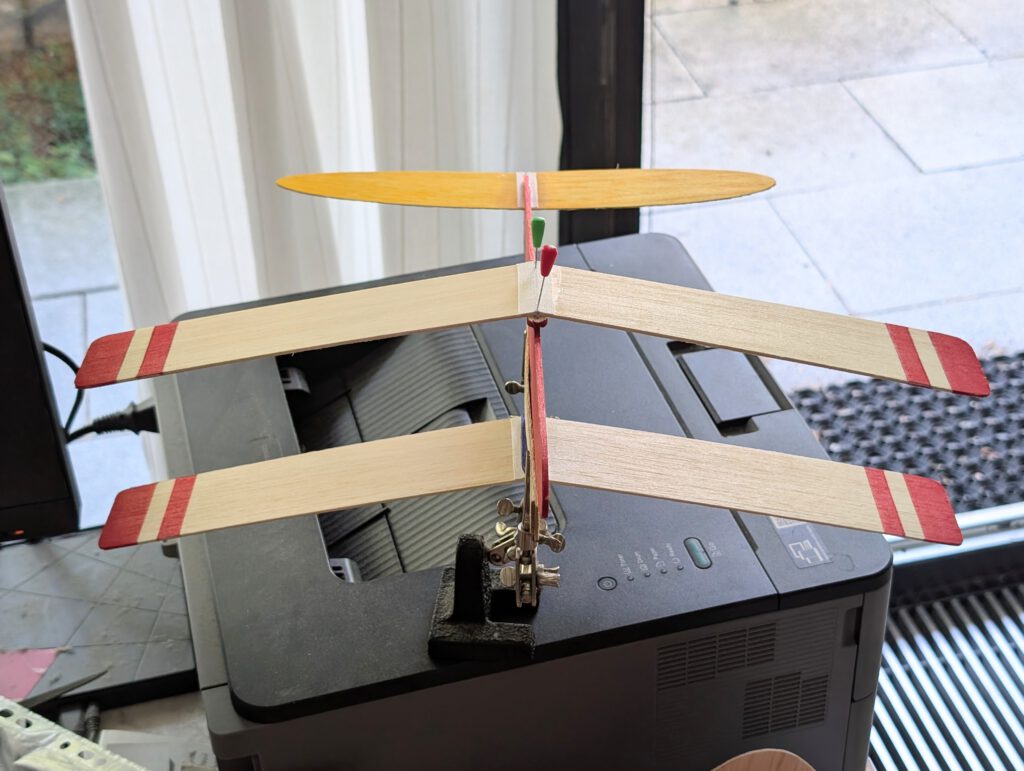
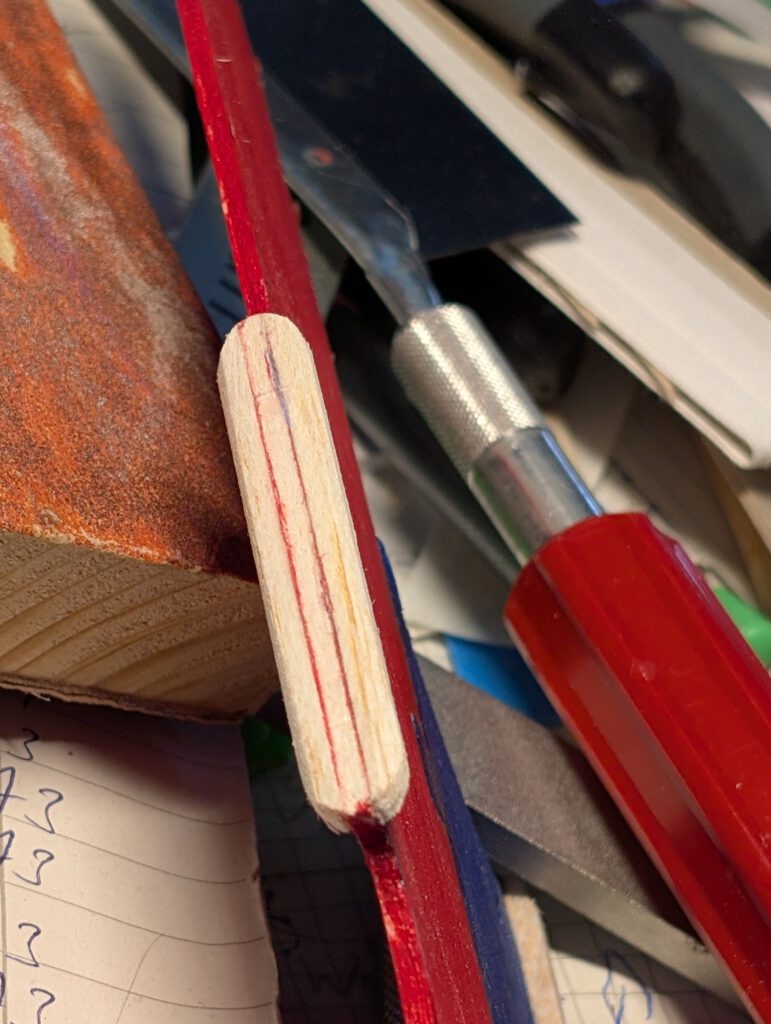
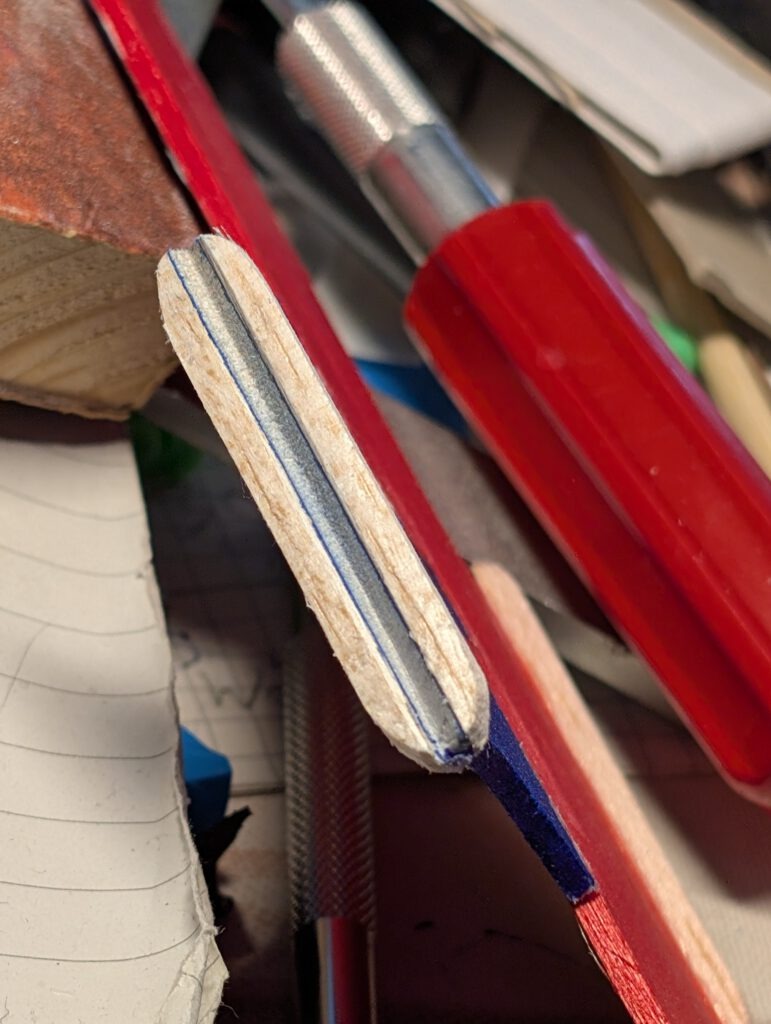
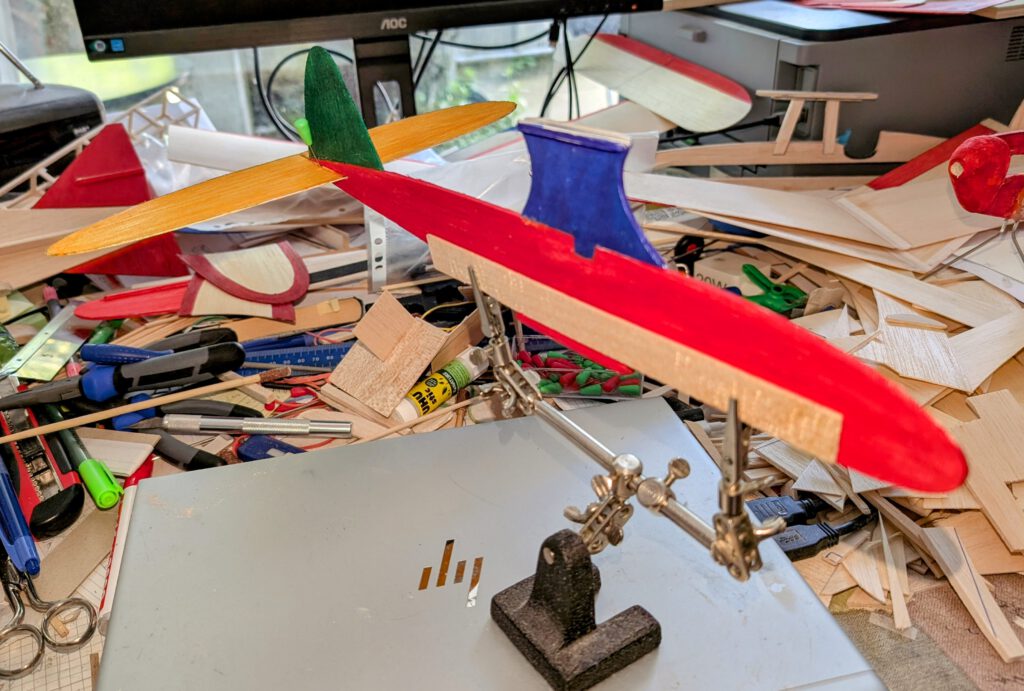
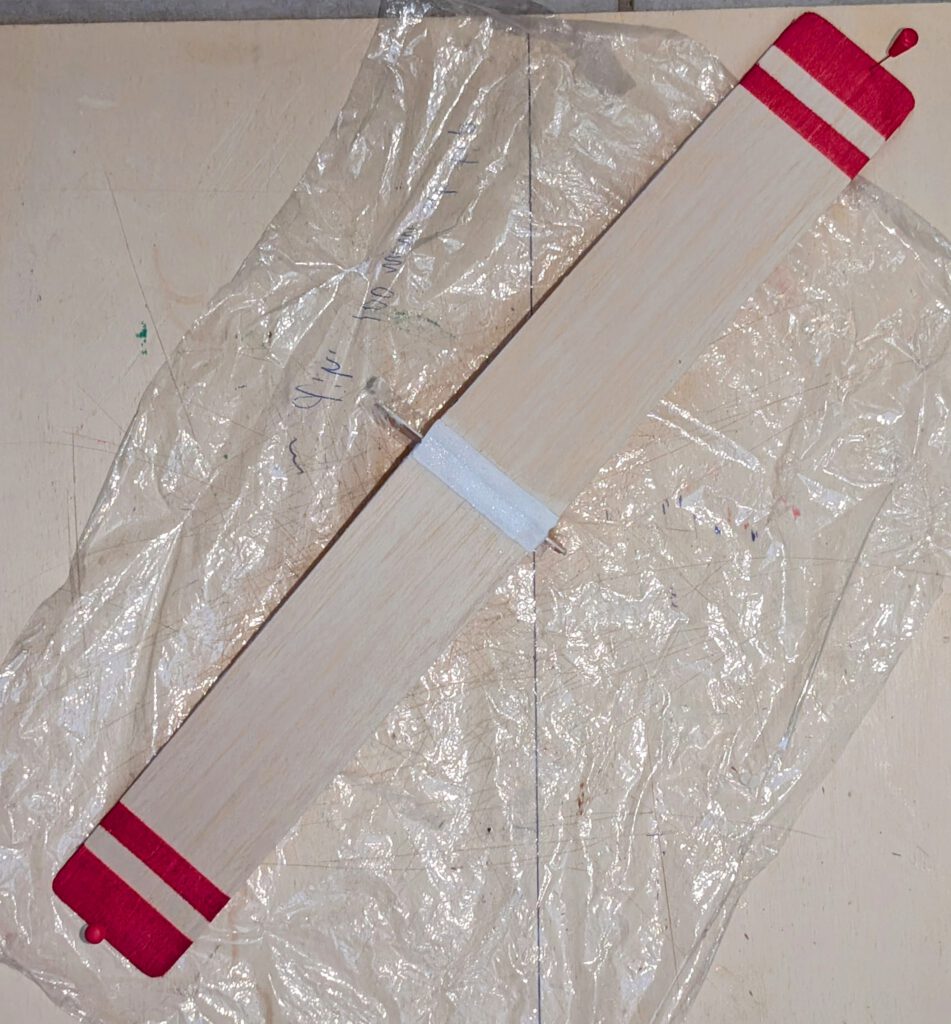
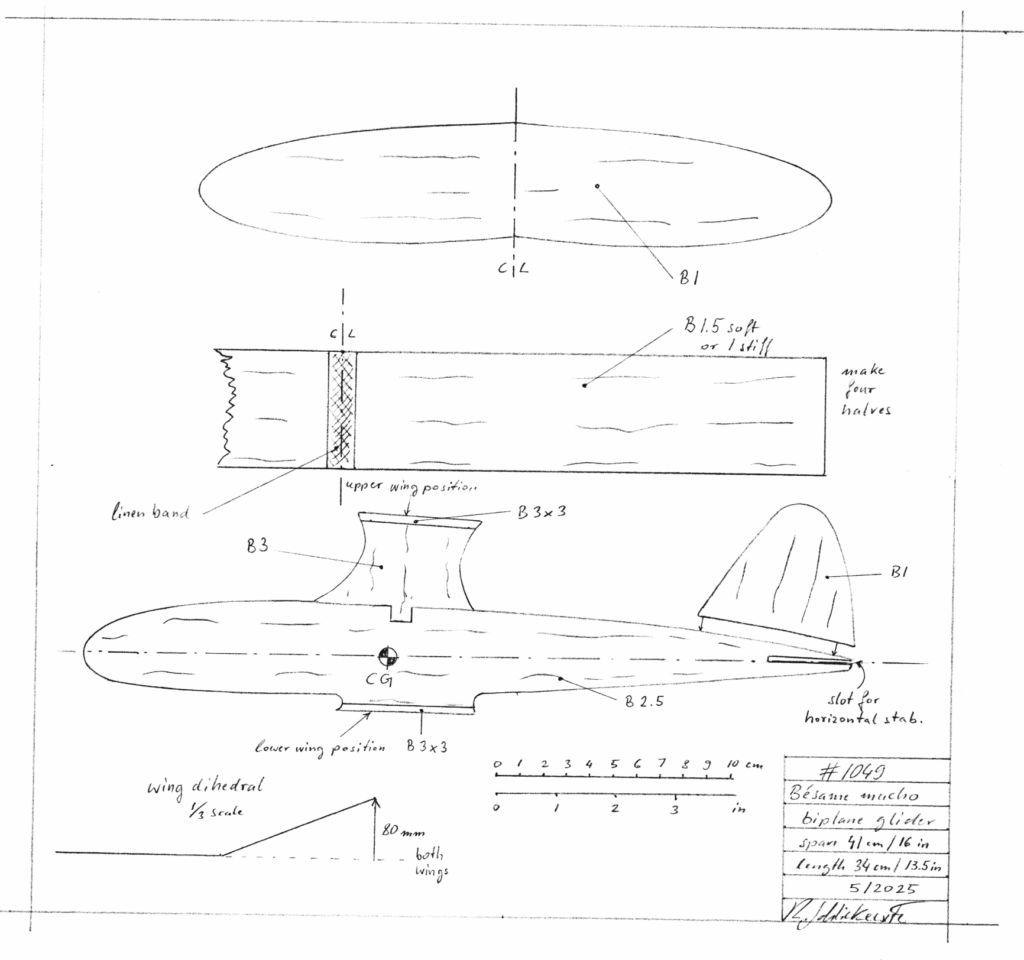
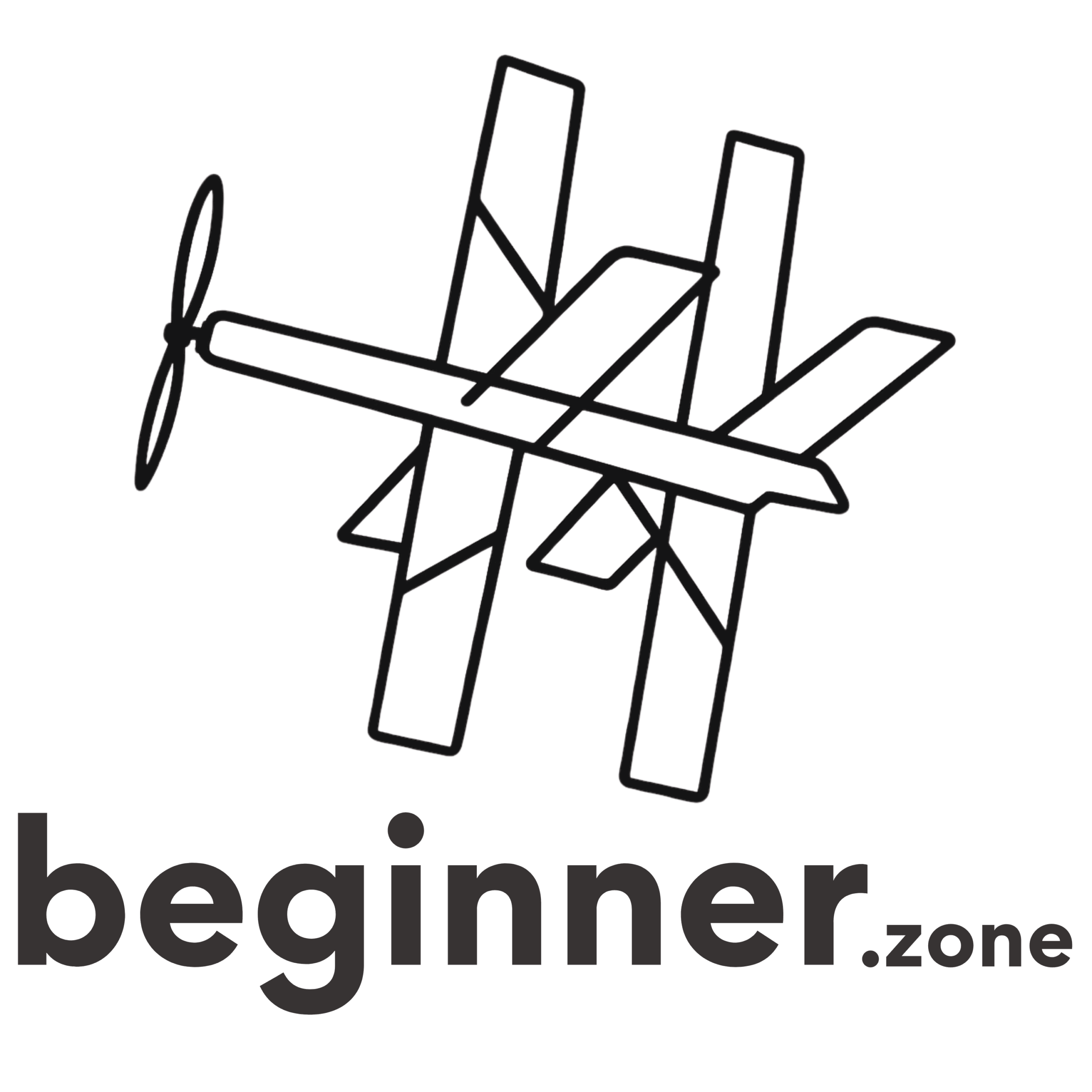
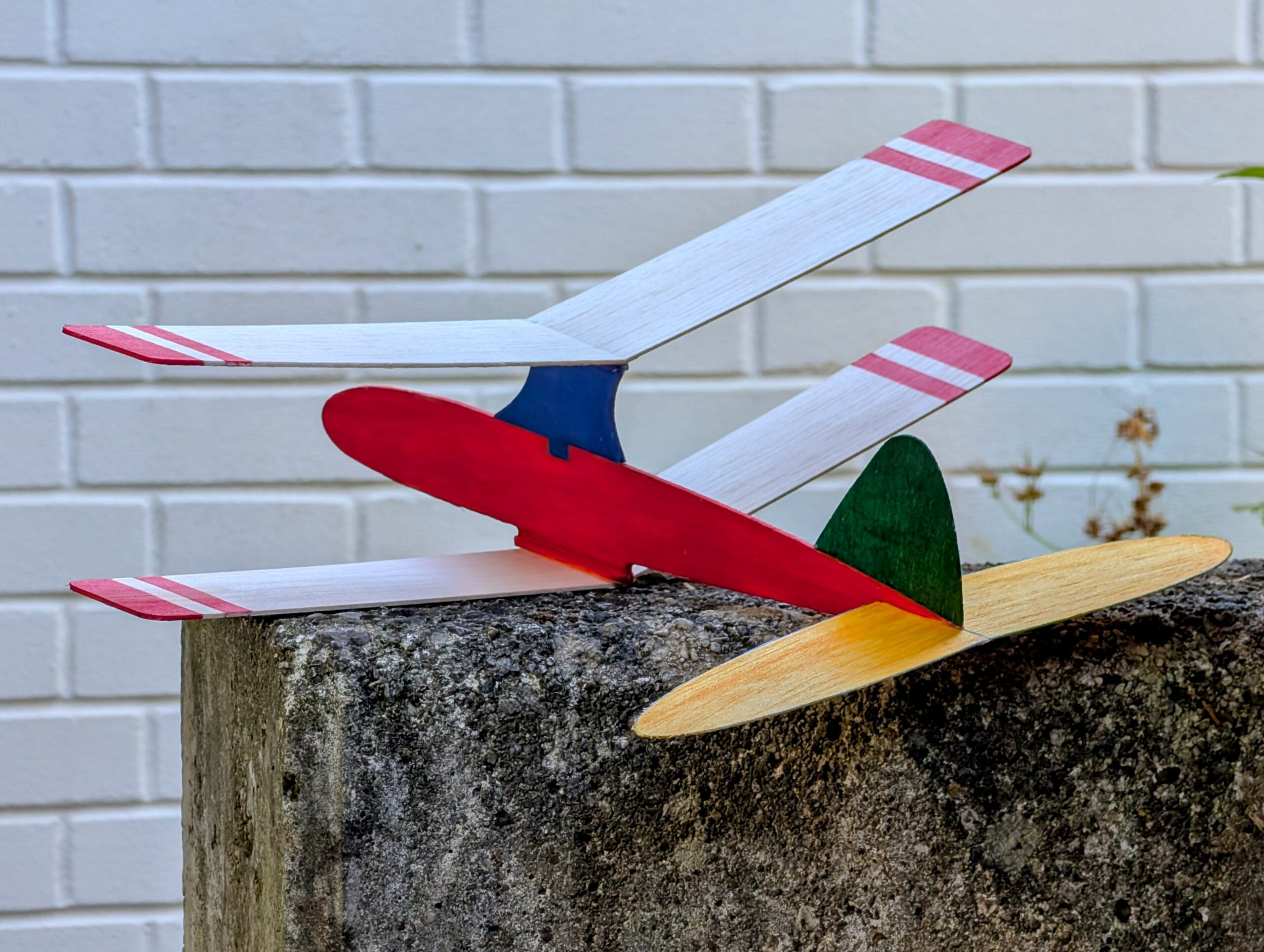
Leave a Reply